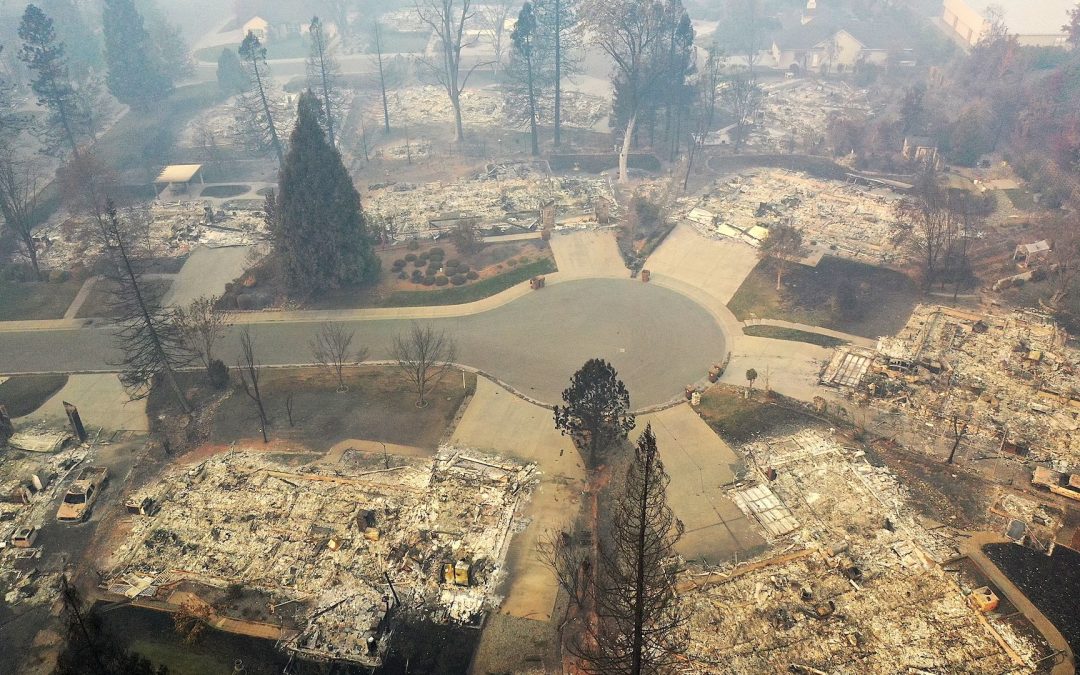California’s Camp Fire has now claimed 63 lives and destroyed at least 9,844 homes, 336 commercial and 2,076 other buildings. A staggering 631 people are now listed as missing.
Some 52,000 people have been displaced to shelters, motels, homes of friends and relatives.
The Camp Fire is California’s most destructive and deadliest wildfire on record, surpassing records set just 13 months ago.
The fire is causing dangerously poor air quality to blanket the San Francisco Bay Area.
President Trump said today it was possible that wildfires ravaging the state of California in recent days have been exacerbated at least in part by climate change.
Trump told Fox News that “maybe” climate change contributes “a little bit” to the fires that have so far destroyed thousands of homes in the state and killed at least 66 people.
“Maybe climate change contributes a little bit. The big problem we have is management,” Trump told Wallace, appearing to double down on his argument that mismanagement of California’s forests was the main contributing factor to the speed and ferocity of the fires.
“The president’s assertion that California’s forest management policies are to blame for catastrophic wildfire is dangerously wrong,” responded California Professional Firefighters President Brian Rice in a statement.
“Wildfires are sparked and spread not only in forested areas but in populated areas and open fields fueled by parched vegetation, high winds, low humidity and geography,” he added.
No single factor — not climate change, forest management or building practices — is responsible for the deadly blazes the state is now seeing, climate experts say.
Instead, it’s their combination that’s making an already dicey situation far worse.
The state’s fire season now stretches later into the fall and starts earlier in the spring.
Longer-term climate change and population growth are combining to increase wildfire risk in California and more broadly across the American West.
One of the starkest changes firefighters are contending with is an uptick in instances of extreme fire behavior, such as the massive EF-3 fire tornado that accompanied the Carr Fire in July.
The biggest climate change-related impact is manifested in the increased dryness of vegetation.
“The warming equals drying equals more explosive fire growth,” said Neil Lareau, a researcher specializing in fire weather at the University of Nevada at Reno.
